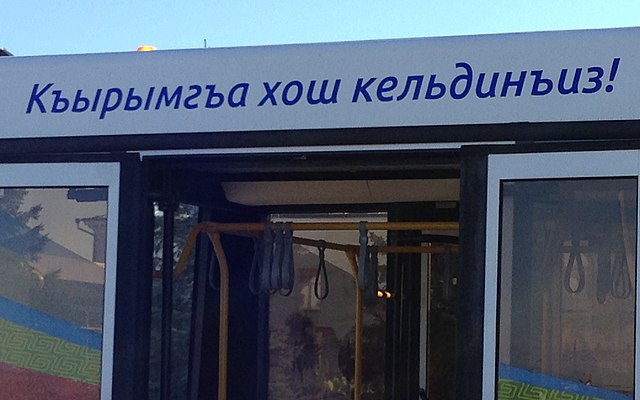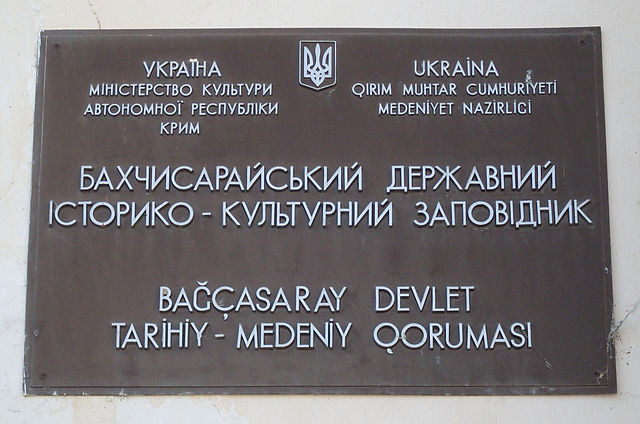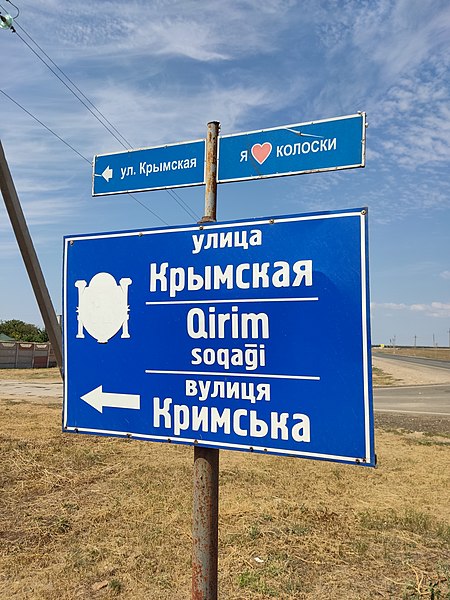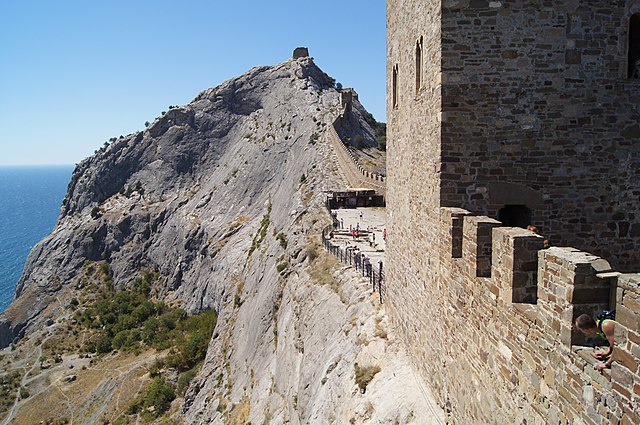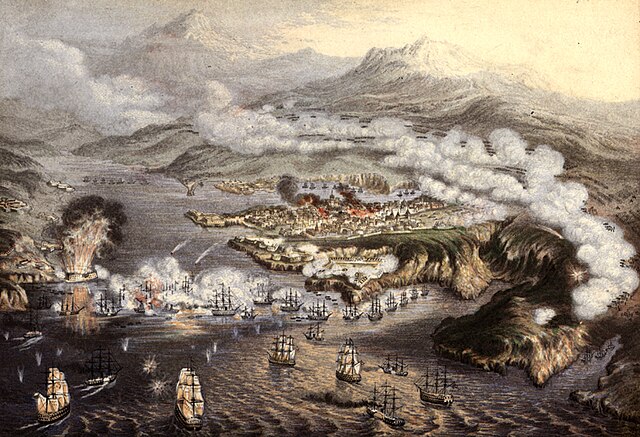Crimean Tatar, also called Crimean, is a moribund Kipchak Turkic language spoken in Crimea and the Crimean Tatar diasporas of Uzbekistan, Turkey, Romania, and Bulgaria, as well as small communities in the United States and Canada. It should not be confused with Tatar, spoken in Tatarstan and adjacent regions in Russia; the two languages are related, but belong to different subgroups of the Kipchak languages, while maintaining a significant degree of mutual intelligibility. Crimean Tatar has been extensively influenced by nearby Oghuz dialects and is also mutually intelligible with them to varying degrees.
"Welcome to Crimea" (Qırımğa hoş keldiñiz!) written in Crimean Tatar Cyrillic, airport bus, Simferopol International Airport
Crimean Tatar Latin script on a plate in Bakhchysarai in 2009, along with Ukrainian
Crimean Tatar Latin script sign in Saky Raion in 2021, along with Russian and Ukrainian
An example of Crimean Tatar Arabic script
Crimea is a peninsula in Eastern Europe, on the northern coast of the Black Sea, almost entirely surrounded by the Black Sea and the smaller Sea of Azov. The Isthmus of Perekop connects the peninsula to Kherson Oblast in mainland Ukraine. To the east, the Crimean Bridge, constructed in 2018, spans the Strait of Kerch, linking the peninsula with Krasnodar Krai in Russia. The Arabat Spit, located to the northeast, is a narrow strip of land that separates the Syvash lagoons from the Sea of Azov. Across the Black Sea to the west lies Romania and to the south is Turkey. The largest city is Sevastopol. The region has a population of 2.4 million, and has been under Russian occupation since 2014.
May 2015 satellite image of the Crimean Peninsula
Ruins of the ancient Greek colony of Chersonesus
Genoese fortress in Sudak, 13th century, Republic of Genoa, originally a fortified Byzantine town, seventh century
The 11-month siege of Sevastopol during the Crimean War

